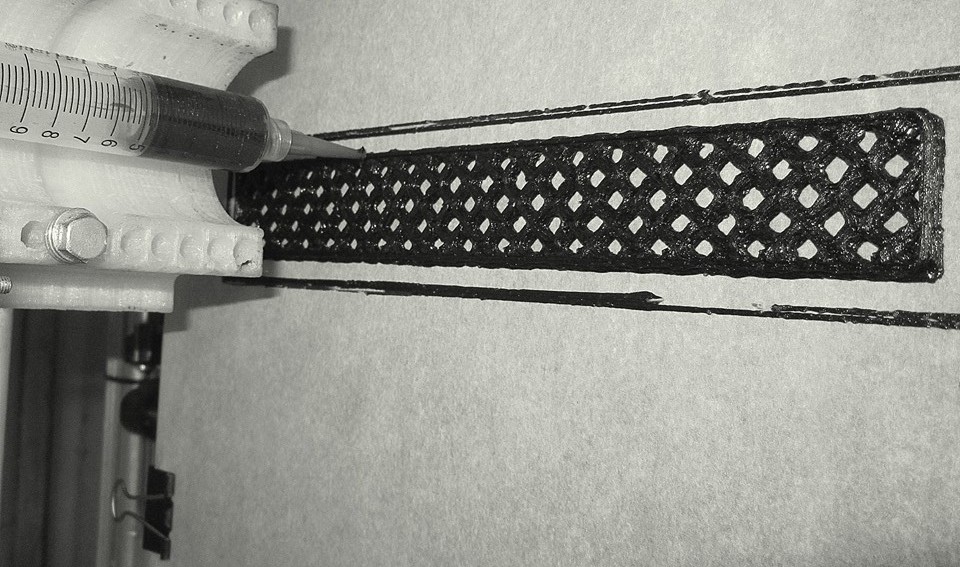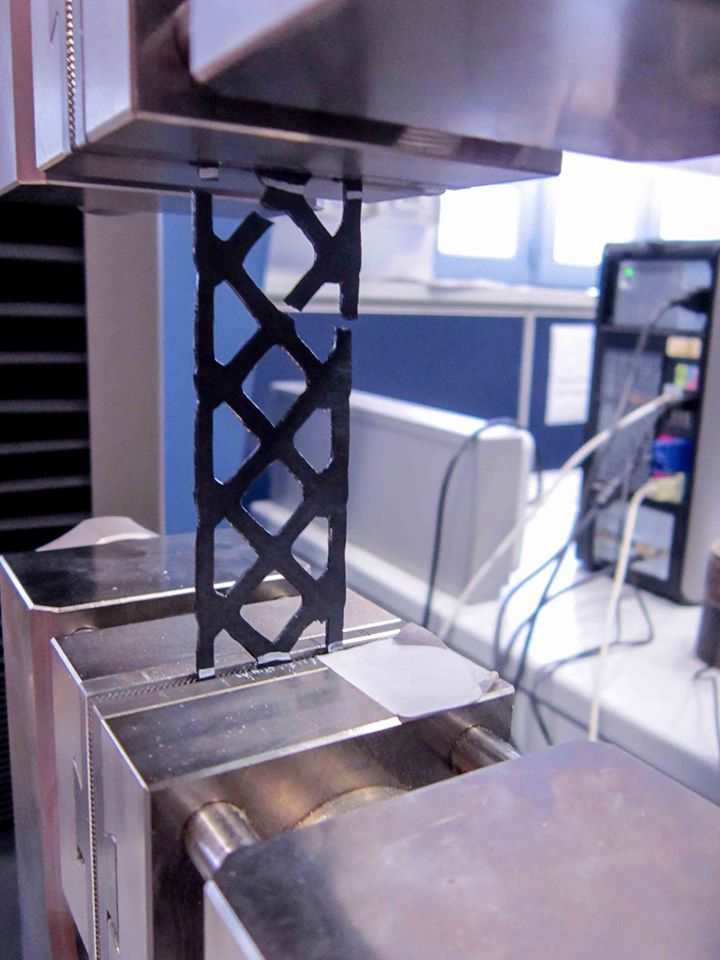There are several University labs I can think of whose names are inextricably associated to the professors that created them: Prof. Oxman’s Mediated Matter Lab at MIT, Prof. Pearce Research Group at Michigan tech, the Lewis Lab at Harvard. At Milan’s Politecnico University, the 3D printing research lab is Professor Marinella Levi’s +Lab and their latest project is an arm brace 3D printed using epoxy resins and short carbon fibres.
The team at the +Lab, which was established in 2013, works together with the Chemical and Materials Engineering Department to develop new materials and new material applications for 3D printing. Their work follows in a long standing tradition of polymer research, which began with Giulio Natta, who won the Noble Prize for his work on polymers in 1963.
The +Lab has been experimenting with several different types of 3D printers but one of their main areas of expertise is 3D printing using paste-like materials and extrusion syringes. This gives them the possibility to work with a broader range of substances. Such as, for example, epoxy resins and carbon fibres which cannot easily (or at all) be 3D printed by other methods.
In this experiment they 3D printed the arm brace using a paste extruder and created a flat and thin brace which was then thermoset in an oven: this means that the polymerisation process for the epoxy resin (mixed with carbon fibre in powder form) takes place as the object is heated. When it reaches 50°C it is still sufficiently soft that it can be placed on the wrist and molded into the desired, custom shape.
“3D printed braces are generally made in PLA, however this material commonly used in low cost 3D printing has very limited mechanical properties,” Professor Levi told me. “Using the composite formula, we were able to create braces that are much thinner and yet offer more support and comfort.” The 3D model used has been made available on Thingiverse under a non-commercial CC license, like many other +Lab projects before, as they are often focused on using their science for helping people with disabilities or solving real life problems.
The +Labs’ Francesco Sillani, Gianni Presti, Gaia Alberio, Anna Tosi, Anna Paderno, Gabri Noel and Giovanni Postiglione contributed at the project led by Prof. Levi, who has been one of the very first persons, in the Italian academic landscape, to see the possibilities that desktop and RepRap 3D printing could offer to education and material science. Now her work ifs finally being recognized, as she has her own column on Italy’s main newspaper Corriere della Sera, entirely dedicated to telling “3D printing stories” and thus to bringing this technology and the science of the materials that feed it to even more people.





